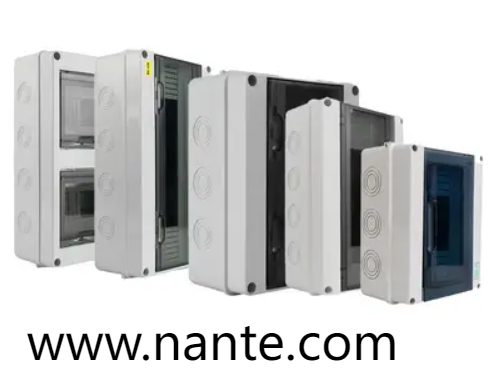As the world accelerates towards a cleaner energy future, integrating solar arrays and wind turbines into existing grids presents a unique set of challenges. An outdoor electrical distribution panel plays a pivotal role in managing two way power flows, accepting energy injected by renewables while maintaining stability for conventional loads. By orchestrating bi directional currents, these advanced enclosures ensure that excess generation from rooftops and fields feeds back seamlessly into the network without causing voltage swings or equipment stress.
Renewable sources inherently fluctuate with weather and daylight, requiring distribution hardware that adapts in real time. The panel's smart controllers monitor incoming and outgoing currents, adjusting switchgear settings to balance supply and demand. When a cloud passes over a large solar farm, inverters momentarily reduce output, and the panel regulates tap changer positions on transformers to maintain voltage. Conversely, during peak generation periods, the same unit channels surplus energy toward storage systems or neighboring load centers, preventing reverse power flow that could destabilize upstream substations.
In regions adopting dynamic pricing and demand response programs, bidirectional capability unlocks new value streams. Homeowners with rooftop modules or community solar subscribers can sell excess energy when rates peak, and consume from the grid when rates drop. The outdoor electrical distribution panel's integrated metering captures precise export and import data, feeding into billing platforms and energy management dashboards. This transparency empowers prosumers and utilities alike to optimize dispatch strategies and reduce reliance on fossil fueled peaking plants.
Reliability under varying conditions remains critical. Enclosures exposed to UV, rain, and dust incorporate high performance gaskets and corrosion resistant materials. Circuit breakers and switches operate within sealed compartments to avoid moisture ingress, while internal climate controls prevent condensation on sensitive electronics. Surge arrestors defend against lightning strikes that often accompany summer storms—events that also trigger rapid swings in renewable outputs. Robust protection devices within the panel safeguard both local renewable inverters and downstream consumer equipment.
Safety supervision also extends to fault detection. Advanced sensors embedded in the panel track phase imbalances, ground faults, and arc flash precursors. When irregularities surface—such as unbalanced currents caused by partial shading on panels—the panel alerts operators and can automatically isolate the affected section. This proactive approach minimizes equipment damage and reduces the risk of fire, ensuring that both renewable generators and critical loads remain protected.
As electric vehicle fleets expand, charging depots increasingly pair on site solar with storage to reduce grid impact. Fast chargers draw high currents, and panels must route power bidirectionally between grid supply, photovoltaic arrays, and battery banks. Intelligent load sharing prevents grid overloads while prioritizing onsite consumption. During grid outages, the panel can orchestrate a seamless transition to islanded operation, feeding chargers from battery reserves without manual intervention. This resilience supports uninterrupted fleet operations for buses, delivery trucks, and passenger services.
Grid operators also rely on distribution panels to integrate community energy networks. Microgrids encompassing multiple rooftops, small wind sites, and storage nodes use peer to peer energy exchanges. Panels installed at junction points manage local flows, ensuring that each participant receives reliable voltage and frequency. When backing up critical facilities such as hospitals or data centers, these panels coordinate automatic switchovers, selecting the cleanest available power source while maintaining synchronization with the main grid.
Maintenance and scalability feature heavily in modern designs. Modular architectures let engineers add extra breaker units, smart meters, or communication modules without replacing the entire enclosure. Plug and play rails simplify installation of new circuit cards for emerging applications like hydrogen electrolyzers or advanced demand response interfaces. Field technicians appreciate standardized mounting and clear labeling, reducing commissioning times and minimizing the risk of wiring errors during expansions.
Digital convergence furthers operational insight. Embedded Ethernet and cellular interfaces connect panels to cloud platforms, where machine learning algorithms analyze historical load profiles and renewable generation patterns. Predictive analytics forecast potential grid stress points, guiding preemptive reconfiguration or targeted maintenance. By transforming physical distribution assets into data rich nodes, utilities achieve higher asset utilization and deliver superior service reliability to end users.
Sustainability permeates the entire lifecycle. Panel housings use recyclable metals and environmentally friendly finishes. Manufacturing centers implement energy saving processes and water recycling to lower carbon footprints. When a panel reaches end of life, recovery programs extract valuable copper and aluminum components for reuse, aligning with circular economy goals. Buyers who prioritize green supply chains find these credentials reinforce their own environmental commitments.
For developers and energy planners seeking to harness the full potential of renewable integration, the right outdoor electrical distribution panel is a game changer. By managing bidirectional flows, ensuring safety, and delivering smart analytics, these advanced systems underpin the transition to a decarbonized grid. To explore comprehensive solutions tailored to solar farms, wind parks, and microgrids, visit https://www.nante.com/product/ .
